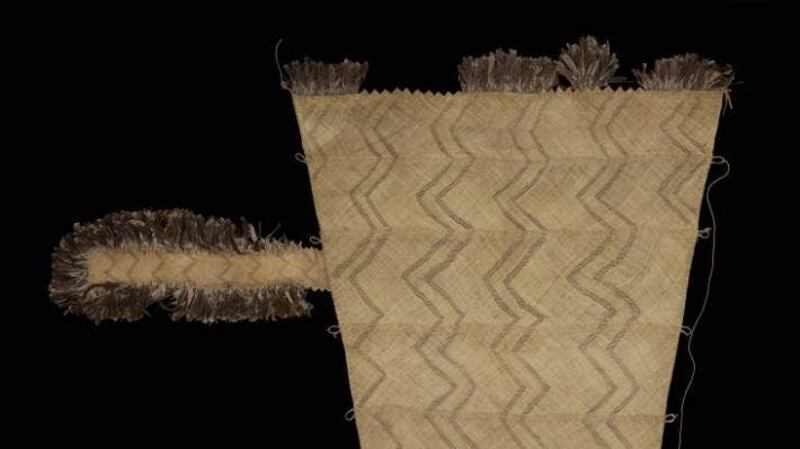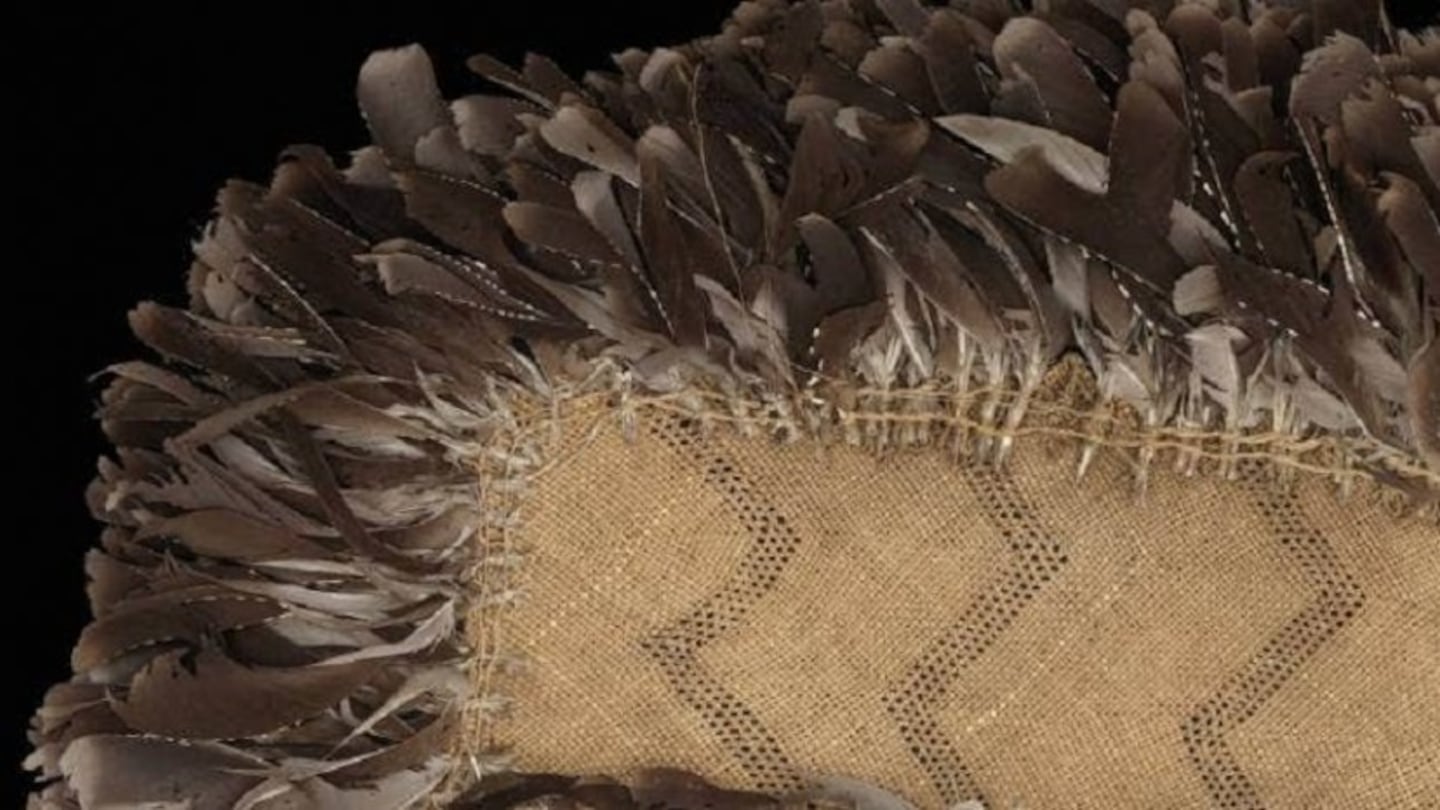Te Rā was found to be made from harakeke, kererū, kahu and kākā feathers, and dog skin. Cultural Heritage Imaging / Stuff
By Jody O'Callaghan, Stuff
Experts suspect a traditional Māori sail believed to be more than 200 years old, on loan from the British Museum, could have been gifted to Polynesian navigator Tupaia.
Te Rā will be on display at Christchurch Art Gallery Te Puna o Waiwhetū before heading to Auckland Museum in October.
Since its arrival on June 20 – after being rolled up carefully around a tube and transported in a crate accompanied by two guardians – weaving, sailing and navigation experts have been in awe of the only known taonga of its type.
A Royal Society Te Apārangi Marsden fund project, was created to become the first team to systematically study or document the sail. Researchers include Māori textiles scholar Dr Catherine Smith, Associate Professor Donna Campbell (Ngāpuhi, Ngāti Ruanui) and Ranui Ngarimu (Ngāi Tahu/Ngāti Mutunga).
Campbell said it had been a long process to get it to Aotearoa, but “for us, bringing Te Rā home, it's just amazing”.
A three-day wānanga was held to enable people to “get up close and personal” with the 5m-long sail, with permission from the British Museum to allow people to touch the delicate weave.
“That’s pretty incredible for such a rare taonga.”

“What’s most amazing is a pattern that zigzags through it, and it’s not interrupted in the joins,” said Associate Professor Donna Campbell of Te Rā, on loan from the British Museum. Cultural Heritage Imaging / Stuff
One side showed the joins and valuable information for weavers, and it showed how genius tūpuna Māori (Māori ancestors) were, she said.
“It’s a taonga joined with 13 panels. It’s a unique construction that contemporary weavers don’t use today.
“What’s most amazing is a pattern that zigzags through it, and it’s not interrupted in the joins.”
Talking with navigators, the continuous awamātangi, or voids (like air holes in the weave), were integral to allow wind to pass through the sail.
There was speculation that feather adornments on Te Rā were for helping navigators ascertain the wind direction, since they were notched and split in a way that softened them to blow freely.
Research on the piece had thrown up more questions than researchers went in with, Campbell said.
But she hoped its exposure would help in their research, which the team hoped to produce a pukapuka (book) on eventually.
“Maybe other museums around the world might say they have something like it.”
When Ngarimu went to England to visit the sail in 2020, a sample was taken that confirmed the material was harakeke, along with weka and kererū feathers, and a tiny piece of dog hide – a native kurī used only in kākahu (garments) for those of the highest ranking.
No tribal provenance was found, so the piece would be returned to the British Museum – with whom the research team’s strong relationship made the loan possible.
“Lots of people didn’t even know Te Rā existed because it was all the way over at the British Museum, locked away.”
From what they understood so far, it was not an across-ocean sail, but rather used on waka travelling the coastline.
But it was a mystery how it came to be in British hands.
It was first recorded by the British Museum in 1890, but had likely been in storage there a lot longer.
The team speculated that it came from Captain James Cook’s collection in the 1700s, “but we can’t say for sure”.
“We think it came to have been gifted to Tupaia, the Polynesian navigator on the ship.”
“The genius of tūpuna that’s embodied in this tāonga. Everything about it.”
The design involved immense ecological knowledge, delicate strands less than 5mm wide, and it was so “amazing, beautiful” that when Campbell saw it again on its arrival – despite already having seen it in England – she was “mind-blown, again”.
Te Rā exhibition opens on Saturday, and there will be various events held at the gallery about it over the weekend.
On Saturday, Ngā Waka Federation’s Robert Gabel will chair a panel of kaiwhakatere/expert navigators including Hoturoa Barcley-Kerr, Martin Bercic, Stanley Conrad, Hemi Eruera and Jack Thatcher, to reveal a glimpse of the mindset forged through ocean voyaging in the footsteps of tīpuna.



